I’ve just finished two days of oil spill clean up exercise together with the fire department in Oslo, and it’s been two very nice and educational days.
Yesterday the officers from FIG Follo and the IG in Follo spent the day with Eivind Ask who held an excellent lecture in how oil spill clean ups should be handled. I think he did a great job, even if he had to compress what usually is a two day lecture into one.
Then today we got together with the rest of the FIG and IG and headed down to Sjursøya. Sjursøya is a peninsula just south west of the centre of Oslo and contains a large terminal for fuel oil distribution. Which means it’s a prime spot for oil leaks, and I guess a possible site for a gigantic fireball. I guess we were lucky that there were no fuel trains at the depot when the runaway cargo train hit on the 24th of March [1]
But today it was all quiet and the weather was great. I’ve even managed to get a divide where my beret has been all day 😉
At first the fire chief took us to have a look at the larger mounted oil spill booms that are on a winch drum ready to be pulled out swiftly to prevent any oil leaks from the terminal or cargo ship to escape into the Oslo fjord.
Then we divided up and started going thou some of the equipment that we might come in contact with if we get called out.
The FIG started out with the Vacuna 1000 system. The Vacuna system is a system for sucking up oil from the shorelines. It’s based around a air pump that can be configured either to blow bark onto the oil spill or to suck up oil, water and bark from the same place.
Bark is blown onto the oil in order to make it less sticky and easier to get at, either by using the suction part of the pump or more commonly, by hand. There’s no use trying to hide it, getting oil from the shores is gruelling, backbreaking, tedious manual labour. The pump will work great if the oil is still in pools or floating on water, but as soon as it hits the rock you’ll have to get down and dirty.
The bark also helps nature work a bit faster when it comes to breaking down leftover oil. Getting all the oil from a spill out of the ground is impossible, but if we get most of it out nature will eventually do the rest.
After the Vacuna we went and had a look at the different oil spill booms that are in use. The equipment we went thou is made for calm waters mostly. There are bigger booms but I don’t think we’ll ever see those in the Oslo fjord.
The smallest were one time use booms that actually soak up oil from the water and is the retrieved and disposed of like the rest of the oil that is collected.
The other type is a type that is stored as 25m lengths that might be connected together to for long links.
The last type is a boom that comes “flat packed”. It got a spring loaded air chamber with a one way air valve, when it’s packed it’s rolled tightly and all the air chambers are deflated. To deploy you’ll drop the whole coil into the sea and the pick up the end and start pulling it out. As you unwind the coil the springs in the air chamber is sucking air unto the top part which acts as the booms floating device.
Quite an ingenious contraption. Just make sure you don’t tow it in a to shallow arch, since it might then suck air into the chamber and sink 🙂
To get it back up you’ll have to have a purpose built packing machine. As you drag the boom from the sea you’ll put all the valves in an open position and the machine will wind it neatly into a coil ready to be deployed again later. But of course if it’s been in contact with oil you’ll have to unwind it again, clean it and then rewind it later. Lots of work. I guess that’s why we didn’t get to try out any of those.
Then we went on to the more hand on stuff, looking at the equipment used to scoop up oil manually and fill up Big Bags. The Big Bags are large plastic lined bags that is used to collect oil. Then at a later stage these can be floated to a bout, picked up with a truck or airlifted to some waste disposal plants.
We also went trough how to set up a forward depot with clean and dirty zones where the people doing the dirty work can come and change into clean outfits without con terminating a larger area.
Then we went to lunch, always the best part 😉
After lunch we went and ha a look at the sea skimmer. This is a mechanical device that floats in the water and has some system for collection oil. The one we have has a series of vertical rotating discs powered by a hydraulic pump. The oil will stick to the disc and be scraped of into a container and from there pumped up and sent to be disposed of. The whole setup looks extremely simple, but according to our instructor it is working very well for recovering floating oil.
At the end we had a little competition / exercise where 6 of our squad members went through some of the things we learned that day. Our team was set to connect up the Vacuna and blow some more bark before we reverted the system and sucked i all back into the suction tank. And when that tank was “full” it was emptied over into a holding tank again by reversing the system.
I wasn’t a part of that team but I think they did well. I guess everyone learned quite a few things today, and it’s nice to do something else for a change 🙂
And here are some pictures I took today, have fun.
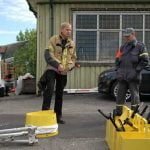
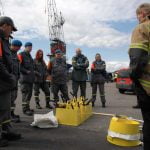
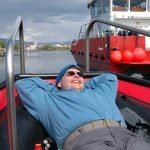
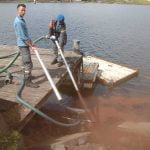
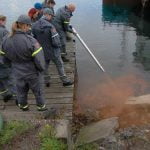
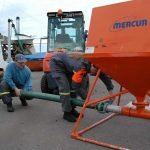
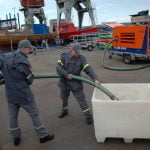
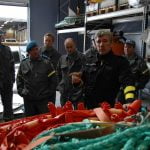


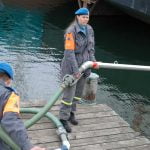
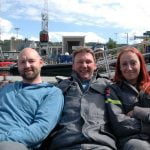
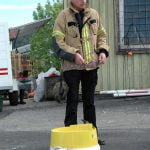
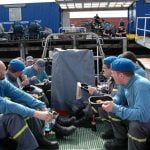
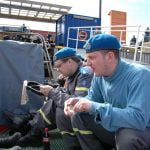
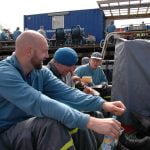

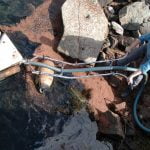
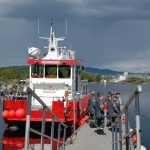
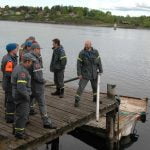
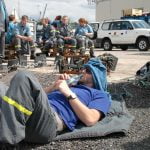
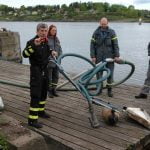
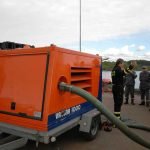
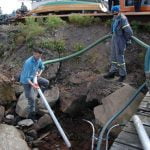
Be First to Comment